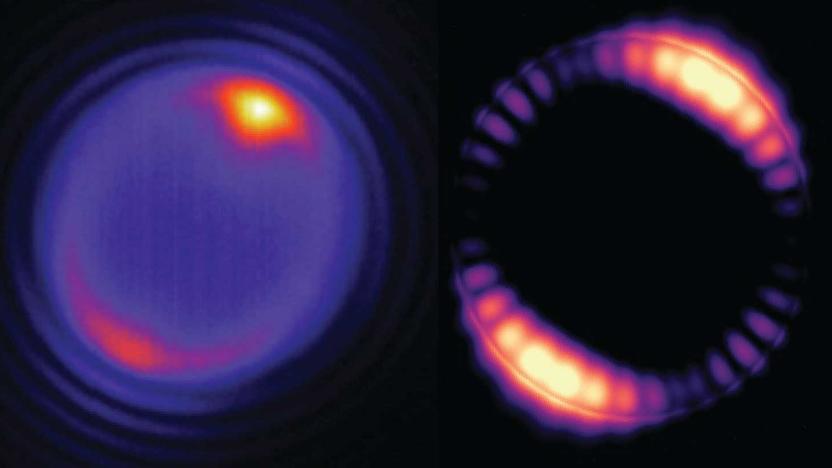microlaser
Latest

Cell-sized 'microlasers' could regulate brain activity
Scientists have spent years creating ever-smaller lasers. Berkeley Lab's latest invention, however, is something special -- and could lead to a significant change in medicine. An international team at the school has developed "microlasers" that are smaller than a red blood cell. The researchers discovered that 5 micron-wide polymer beads mixed with exotic nanoparticles (sodium yttrium fluoride infused with thulium) could reliably emit bright light on specific wavelengths when exposed to infrared light. The concoction makes light bounce around the inner surface of the bead, creating collisions that can repeatedly amplify the light -- it's similar to the "whispering gallery" effect that lets you hear a quiet sound across a giant space with the right acoustics.

World's first 3D microlaser created, has a gooey Bragg-onion center
Solid-state lasers are fine, durable and reliable and all that, but what if you want something a little softer, maybe a little more conforming to your needs and moods? Or, what if you want something that can beam light in all directions at once? Then you need to go liquid, baby, liquid. That's what Slovenian scientists (and diacritic wunderkinds) Matjaž Humar and Igor Muševič have done, creating, in their words, "3D microlasers from self-assembled cholesteric liquid-crystal microdroplets." Various layers of fluids form what's called a Bragg-onion optical microcavity, including embedded crystals not unlike those that flip the tiny switches in an LCD. These blobs are self-assembled chemically and, when a little laser is applied to them, can create a 3D image by shining their light in every dimension simultaneously. Well, not every one -- you know the Fifth Dimension can only be seen if you let the sunshine in.

